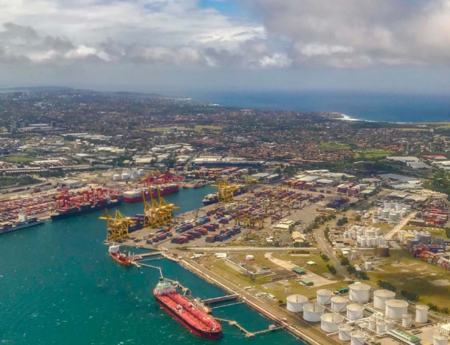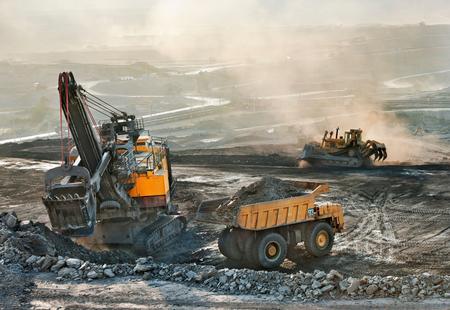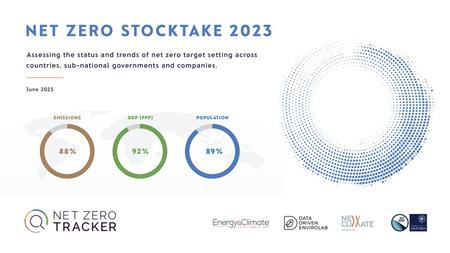Welcome to the second in our series on net zero policies being developed by states and regions to address the climate crisis.
Globally, non-state actors, including regions and corporations, are setting climate targets and net zero transition plans. All significant emitters, from public bodies to private companies, should chart a path to decarbonise their operations in line with science, and report back on progress.
But how robust should reporting regimes be? What makes a net zero commitment credible? And how can progress be assessed? The credibility of net zero transition plans and the quality of public reporting are critical to avoiding greenwashing and ensuring transition plans achieve the desired outcome. This was highlighted in the UN High-Level Expert Group’s report Integrity matters: net zero commitments by businesses, financial institutions, cities and regions, which also made 10 recommendations for successful net zero transitions.
Inspired by this, in the second of the Net Zero Futures Policy Forum ‘LEAD’ meetings (which stands for Learn, Engage and Discuss), governments talked about climate regulation and the need to avoid greenwashing in public and private net zero plans, with guest speakers from the Climate Champions and New South Wales.

Winning the Race to Zero
The Race to Zero is a UN-backed campaign that unites more than 13,000 stakeholders that do not have an official role in COP climate negotiations. Together these stakeholders pledge to reach net zero emissions by 2050 and contribute to halving emissions by 2030. As part of this they must also have a public transition plan and report on their progress.
Tessa Vincent, Race to Zero Policy and Engagement Lead at Climate Champions, presented on practical ways to meet net zero goals. She emphasised that policy and regulation are vital to behaviour change and that these increasingly need to pivot from being voluntary to being mandatory in order to make the progress needed. Having mandatory regulations also gives stability and confidence to businesses that want to be more climate-friendly while remaining competitive. Ensuring consistent standards levels the playing field and prevents first movers from being penalised for taking quick action.

Another way to make net zero plans more effective is to use what Professor Hale of Oxford University calls a ‘conveyor belt’ governance system. This is where campaigns run by respected organisations, such as international NGOs, are combined with strengthened standards and regulation. This can lead to improved standards overall and greater take up across different industries.
Protecting environments and working with industry
The next speaker was Tony Chappel, the CEO of the Environmental Protection Agency (EPA) in New South Wales. The state has legislated whole-of-government climate action in the Climate Change (Net Zero Future) Act 2023, setting out a clear path to deliver net zero by 2050.
The EPA builds on the NSW Government’s climate change policies and initiatives, helping industry to decarbonise and build greater preparedness and resilience to climate change risks. It released the Climate Change Policy and Climate Change Action Plan 2023–26 which includes a comprehensive regulatory approach and set of actions to address the causes and consequences of climate change in NSW. The EPA has a policy mandate to restore and protect the environment consistent with ecological principles. Since 2001 it has also had a recognised legal responsibility to protect the communities from the causes and consequences of climate change.

The EPA released the first of its three-year climate action plans last year with a focus on information and planning, mitigation and adaptation. At the same time, the agency is developing guidance to support its licensees (environment protection licences are issued to the owners or operators of industrial premises under the Protection of the Environment Operations Act, 1997 (POEO Act)) in reducing greenhouse gas emissions and tacking action to build resilience. Last year the EPA surveyed over 2000 licensees to find that in some sectors less than a third of businesses are engaged in planning for emissions reductions, damaging the state’s ability to meet its climate targets and making the licensees themselves vulnerable to future climate shocks.
While engaging with industries it’s important to pass on the message that we are here to support them to decarbonise, not deindustrialise, explained Tony Chappel during the session. Now the EPA is facilitating two industry-specific climate change advisory groups for mining and agriculture to develop solutions suitable for the two industries as appropriate regulation varies by sector. In agriculture for example, it might be more effective to implement regulation at the level of retailers rather than individual producers.

Top trends and recommendations
Both speakers shared their top tips on how to make best use of government regulation and avoid greenwashing, with particular focus on engagement with the private sector in regulating their won emission reductions. They suggested that governments should:
- Develop and publish climate action plans and encourage these at all levels of the economy and government.
- Encourage collaboration around specific elements of those plans, especially outside the energy sector where industry may not be as far along.
- Develop effective monitoring methods to collect the necessary data to develop sector-specific policies and regulation.
- Consider the following three levers:
- Powers: what is (or could be) within your scope as a subnational power, and where do you have the evidence and data needed to support action?
- Speed: how can you accelerate your action, e.g. by drawing from examples in other jurisdictions, from available standards etc?
- Communication: how can you make sure that regulation as well as available guidance and incentives reach the private sector and bring it on board?
With more countries, companies and organisations charting a path to climate neutrality, ultimately it is important that standards on climate regulation align to provide consistency and encourage businesses to plan for emissions reduction – particularly when those businesses have operations that cross different jurisdictions. A fragmented net zero governance landscape creates delays, while competing concepts for "Net Zero" bring confusion. Luckily there are also more resources providing policy makers and other actors useful tools for net zero planning, for example the ISO Net Zero Guidelines and the Oxford University’s Net Zero Regulation Stocktake Report.

Climate targets can feel intangible, especially if their deadlines feel a long way out, and it may be unclear what needs to happen in the short to medium term in order to reach them. Guidance and clarity go a long way to supporting these businesses in what can often be a challenging endeavour.
Climate regulation will only ever be effective if it recognises the problem, provides workable solutions and considers the viewpoints of all people across society. Such an approach also reduces the likelihood of greenwashing, with governments, businesses and communities united around a clear and transparent system that does what it says it will.

